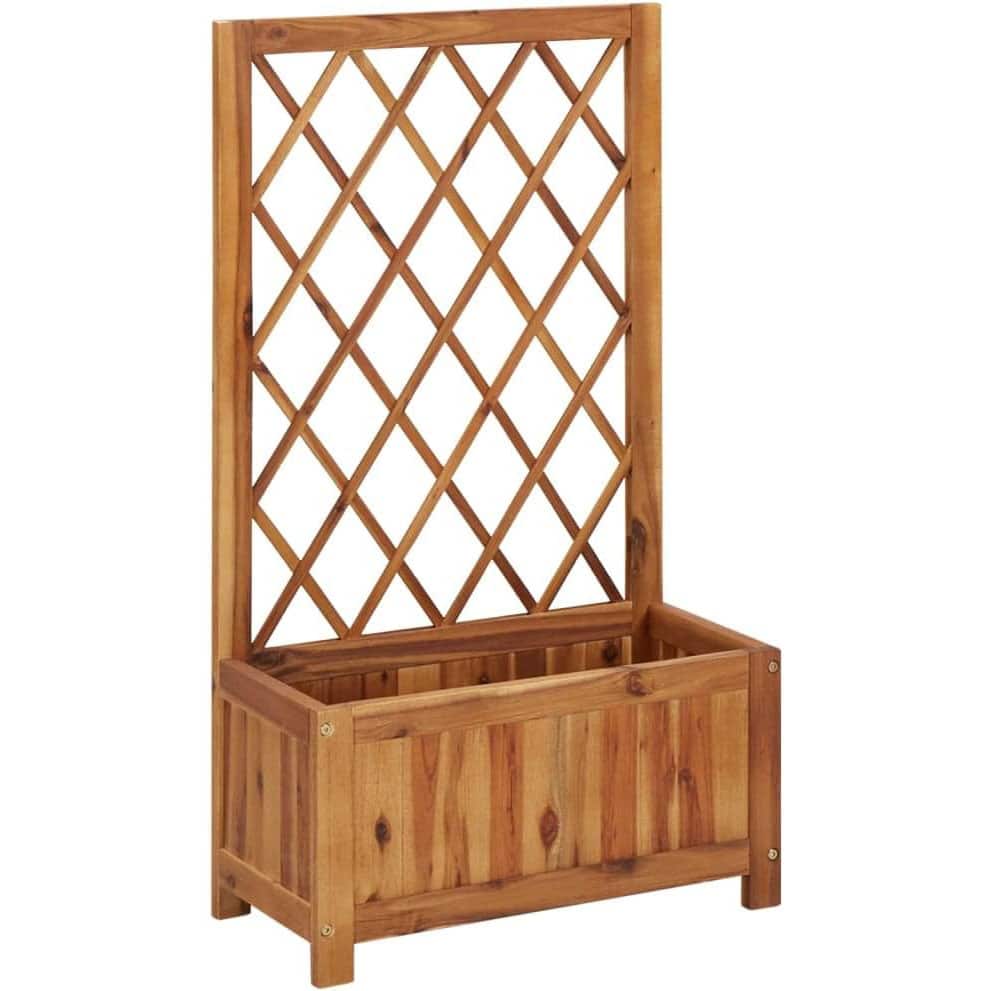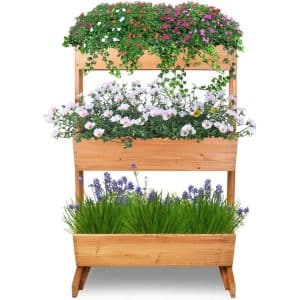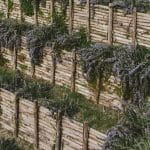Table of Contents
#1 Pick
Cedar Wood – Recommended Product: LYNSLIM Garden Bed
Score 9.0 OUT OF 10Check Price
Runner-up
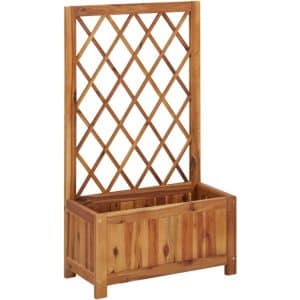
Best Budget
Solid Pine Wood – Recommended Product: JFGJL Garden Bed
Score 8.8 OUT OF 10Check Price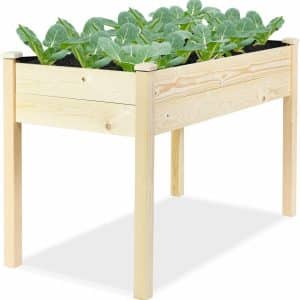
Are you building a raised garden bed? Figuring out the best type of wood before you do so is essential. You might think wood is wood. It’s all the same. But oh, how wrong they would be.
Choosing the suitable wood for your raised garden bed isn’t simply about appearance or cost. We’re talking about the cradle of your precious veggies here! A choice gone wrong can mean chemical treatments that leach into the soil from untreated lumber, contaminating your lovingly nurtured produce.
The best pick should stand the test of time and keep your edibles safe. So, worth investing a little bit of time and thought because, remember, quality is not just a standard but an expectation for a thriving garden. This article details the top woods, key considerations during selection, and more. Read it to the end for valuable insights.
Top Woods to Consider for Raised Garden Beds
1. Cedar Wood – Recommended Product: LYNSLIM Garden Bed
This type of wood ranks among the best because it is naturally rot-resistant. The feature comes from its natural oil, which provides rot protection. This means you don’t need to treat it with chemicals, making it safe. In addition, it is insect-resistant and can withstand adverse weather conditions.
Cedar wood also has aesthetic appeal. Using it will complement your garden’s beauty. It’d be best to use pressurized cedar wood for longevity. Suppressing weeds and retaining moisture using mulch is also necessary for making raised garden beds using this wood.
Pros
- Natural durability
- Aesthetic appeal
- Low maintenance
- Aromatic properties
- High sustainability
Cons
- Rarity
- Prone to shrinking
2. Acacia Wood – Recommended Product: vidaXL Raised Bed
Let’s shift our eyes to Acacia wood. With its rising popularity in the realm of raised garden beds, Acacia wood offers a unique blend of durability and sustainability. This tropical hardwood is renowned for its natural resistance to decay, pests, and moisture, making it an excellent choice for outdoor gardening.
Acacia’s distinctive grain patterns and warm, reddish-brown hues also lend a touch of elegance to your garden. Moreover, its eco-friendly credentials make it a responsible choice for environmentally conscious gardeners looking to cultivate beauty and sustainability in their outdoor spaces.
Acacia is also non-toxic, making it a safe choice for gardening. Its good looks are another plus, as it will enhance your garden’s aesthetic appeal. It’d help to ensure the Acacia is dry before it is used to prevent cracking.
Pros
- Natural durability
- Attractive appearance
- Sustainability
- Versatility
Cons
- Susceptible to warping
- Heavy
3. Solid Pine Wood – Recommended Product: JFGJL Garden Bed
Now, here’s a familiar face – Solid pine wood. Solid pine wood is a practical and budget-friendly option for constructing raised garden beds. Its affordability makes it an accessible choice for gardeners of all levels. Pine is relatively easy to work with, allowing for straightforward assembly of garden bed frames.
While its softness can make it susceptible to dents and scratches, it’s an ideal material for gardeners looking for a cost-effective solution. Pine can be treated or left untreated, depending on your preference for a natural, rustic appearance or a stained and polished finish. When used responsibly, solid pine wood can serve as an accessible and attractive material for raised garden bed construction.
Pros
- Affordability
- Workability
- Accepts finishes
- Lightweight
- Natural Appearance
Cons
- Durability
- Vulnerable to rot
4. Camphor Pine and Spruce Wood – Recommended Product: N/A Wooden Raised Garden Bed
When crafting raised garden beds, the choice of materials is important, and both camphor pine and spruce wood offer unique advantages. Camphor pine, with its aromatic qualities, not only adds a pleasant fragrance to your garden but also acts as a natural insect repellent, enhancing the gardening experience.
In contrast, with its clean and elegant appearance, spruce wood offers durability and ease of workability, making it a practical choice for constructing garden beds.
Both options provide distinct attributes, allowing you to choose the ideal wood for your raised garden bed project, whether you prioritize aesthetics, functionality, or a combination. These versatile wood choices cater to gardeners’ needs to create beautiful and functional outdoor spaces.
Pros
- Aromatic Qualities
- Aesthetic Appeal
- Versatility
- Ease of Workability
- Strength and Durability
Cons
- Higher Cost
- Higher Maintenance
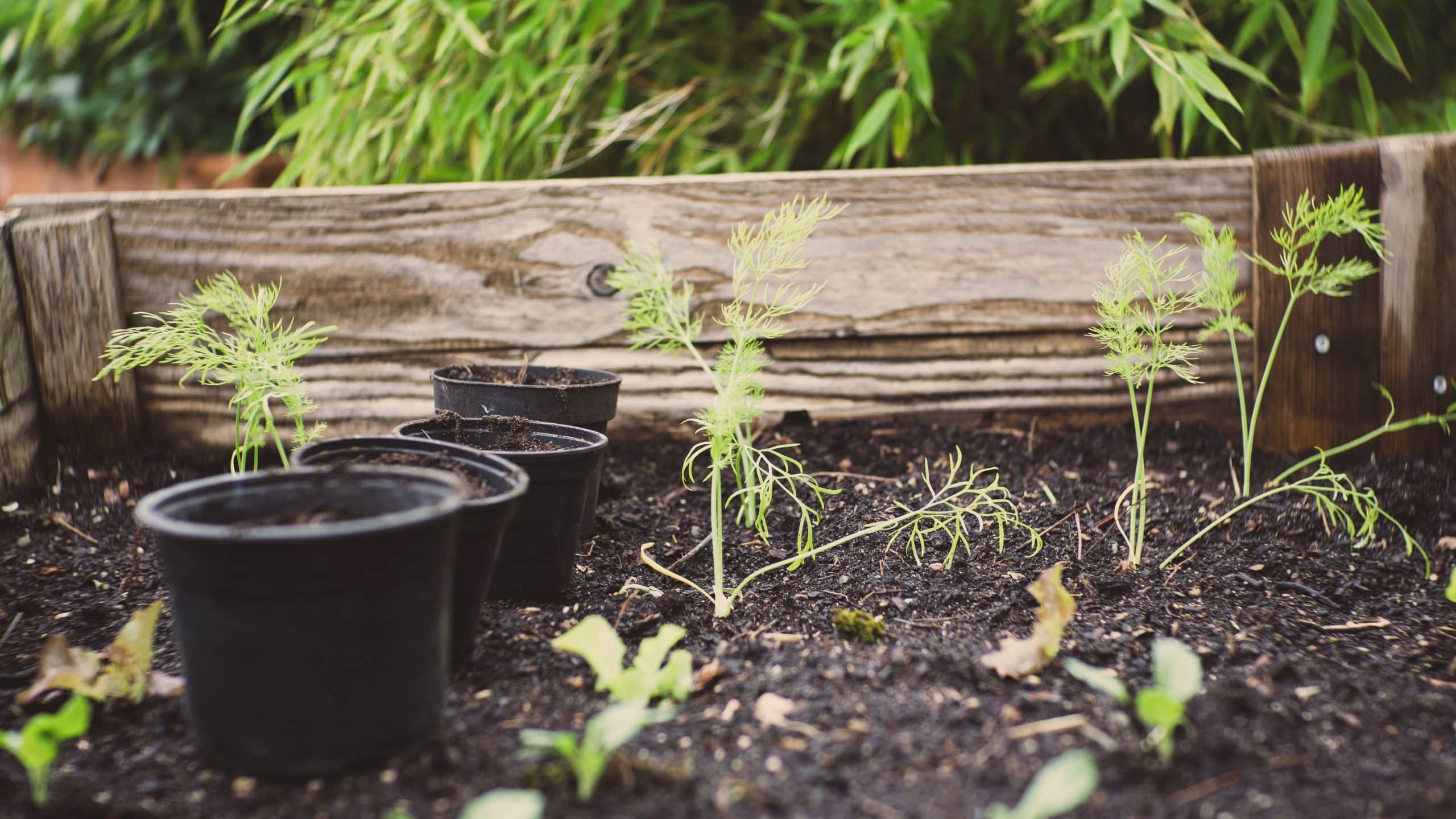
Considering Pressure-Treated Wood
When it comes to gardening and backyard aesthetics, pressure-treated lumber tends to emerge as a rather nifty choice. While it may not have the rugged charisma of cedar, it has its own advantages that can go a long way in your garden. These types of wood are durable, resistant to decay, and affordable. Besides, they are easy to use.
The Cons
- Unpleasant look
- Chemical laden
- Safety concerns
Woods to Avoid When Constructing Raised Garden Beds
It is a no-brainer that some types of wood must be avoided at all costs. But which wood are these?
Black Locust
Using this wood is not advisable because it is allelopathic. It produces chemicals that inhibit the growth of other plants. Therefore, using it in making garden beds will affect your plants. The heartwood of black locusts contains toxic compounds, a natural defense against decay and pests. However, the toxins can leach into the immediate environment, contaminating your plants.
It also takes ages to decay once you stop using it, affecting soil structure and nutrient cycle. Ensure you inquire about the wood you intend to use during your selection process, mainly to avoid the black locust.
Hemlock
It’d be best to avoid hemlock due to its low durability and high susceptibility to decay. This type of wood is also prone to pest attacks, with beetles and termites being the most common. It also contains tannins, chemicals that can leach into the immediate surroundings.
Using it can be costly because it warps and splits as it ages. Seek professional guidance when selecting wood for your raised garden beds to avoid this type of wood.
Recycled Wood Treated With Chemicals
Treated recycled wood is dangerous due to chemicals like copper, arsenic, and chromium. Plants can absorb the toxins when using this wood type to make garden beds. In addition, this recycled wood has longevity concerns when used in harsh weather conditions. Note that you can use barriers like landscaping fabric or plastic if you are out of options. However, it will raise the cost.
Plywood and Particleboard
These types of wood aren’t naturally durable and are treated with toxic chemicals. In addition, they are sensitive to moisture and have a short lifespan. They are also structurally weak.
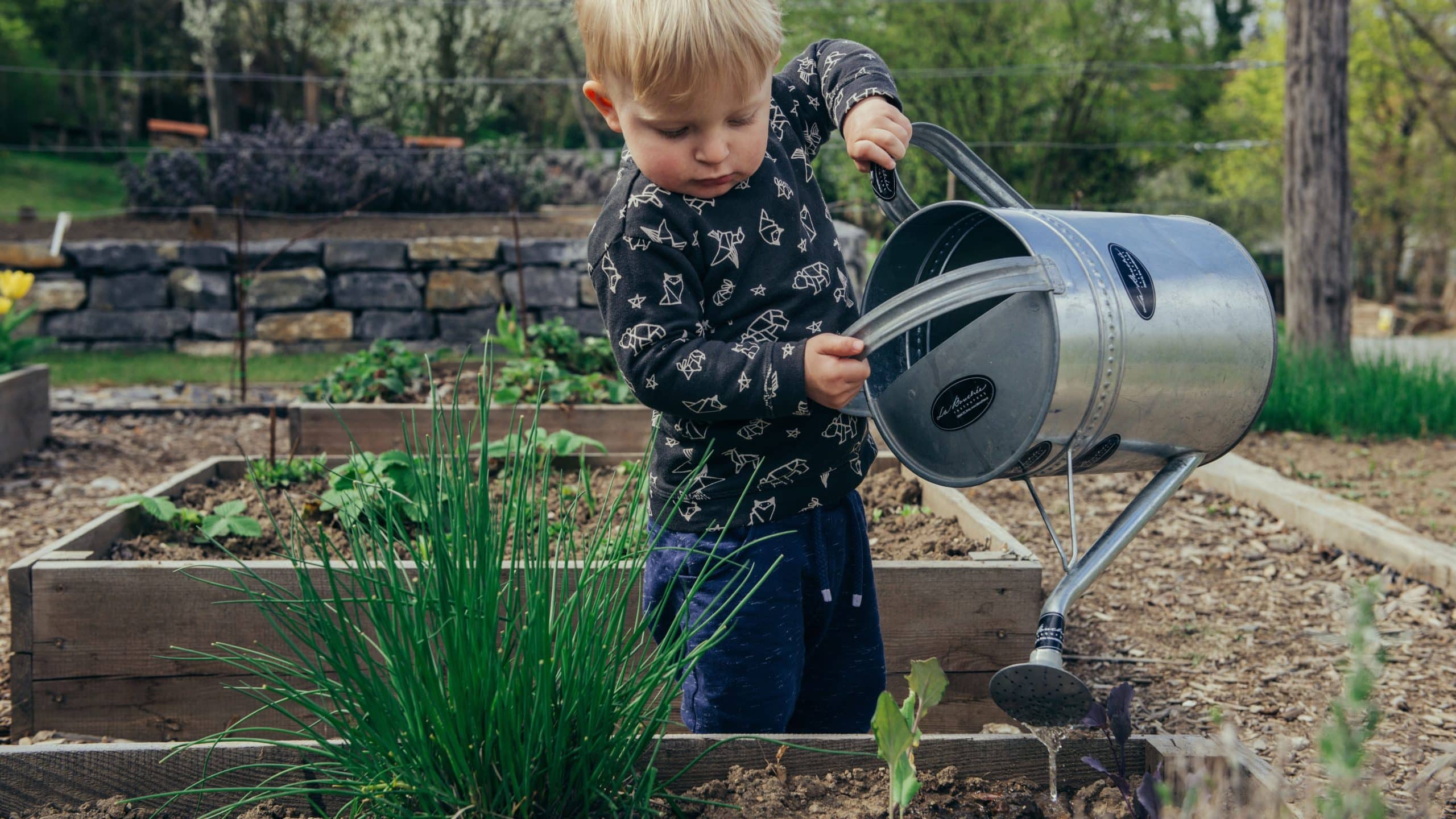
Essential Factors to Consider When Selecting Wood for Raised Garden Beds
The type of wood you choose can significantly impact your garden bed’s durability, safety, and aesthetics. That’s why considering the following factors would be best:
Wood Types
For raised garden beds, treated and untreated wood are the two most frequently utilized types. Although treated wood is resilient, it may leach chemicals into the soil and harm plant health. Pressure-treated wood is frequently chemically treated to resist decay and insects. Untreated wood like cedar, redwood, and cypress are naturally resistant to decay and insects. Due to its toughness and appealing appearance, cedar, in particular, is a preferred material.
Chemical Safety
You should be wary of the toxins included in treated wood if you’re growing food plants. Arsenic and other pollutants found in pressure-treated wood can seep into the soil and be absorbed by plants. By choosing untreated wood, you can put this worry to rest and give your plants and edibles a secure home.
Durability and Rot Resistance
The sturdiness and rot resistance of the wood determines the raised garden bed’s longevity. While other types of wood need treatment, some naturally have these properties. For example, cedar and redwood are great candidates for garden beds because they contain natural oils and chemicals that fend off deterioration and insects. It’s crucial to use heartwood—the inner, denser section of the tree—if you’re using untreated wood since it offers greater resistance to rot than sapwood.
Aesthetic Appeal
Your garden space’s overall attractiveness might be improved by how your garden bed looks. The rich color and unmatched natural beauty of cedar and redwood can enhance the aesthetic appeal of your garden. Do not forget that untreated wood will weather over time and eventually turn gray. Periodic sealing or staining is required if you want the wood to keep its original appearance.
Dimensional Stability
Due to temperature and moisture content variations, wood frequently expands and contracts. Choose wood with good dimensional stability to reduce warping, splitting, and other types of distortion over time. Because of their resilience, cedar and redwood are solid choices for garden beds.
Cost Considerations
Price points for various types of wood vary. More frequently than not, pressure-treated pine is less expensive than cedar or redwood. Untreated wood may appear to be more affordable at first, but it’s crucial to compare the immediate savings with the durability and safety advantages in the long run.
Ease of Construction
Think about how simple it is to work with the selected wood kind. The handling and light weight of some woods, like cedar, makes assembly easier. It may take more time and tools to assemble heavier wood.
Sustainability
Environmental impact is a key consideration when choosing timber. Select wood that has been sustainably obtained and certified by entities like the Forest Stewardship Council (FSC). The negative ecological impact of your garden is diminished by using sustainable wood, which promotes ethical forestry practices.
Maintenance Requirements
The level of upkeep required for various wood varieties varies. Although pressure-treated wood could need less immediate upkeep, it might decay over time. Contrarily, untreated wood will weather and age naturally and may occasionally need to be stained or sealed to maintain its appeal and enhance durability.
Frequently Asked Questions
1. How often should I replace the wood in my raised garden beds?
The frequency of replacing wood used to make the raised bed will depend on various factors, such as the type of wood and the climate you reside in. Redwood and cedar are naturally rot-resistant and can last for many years. You must often replace your raised garden beds if you live in hot and humid areas. Additionally, the frequency of treating the wood will determine how long the raised garden beds will last. It’d be best to carefully select the woods, maintain proper drainage, and inspect the raised garden often to enhance longevity.
2. What is the recommended spacing between the wood planks for good drainage?
1/8 inch and ¼ inch are the ideal spacing for proper drainage. Such spacing allows the water to flow freely through the bed, preventing moisture from accumulating. Spacing the planks closer would be best if you live in a humid area with heavy rainfall. Doing so will improve drainage, ensuring the water doesn’t pool on the garden’s surface.
For better drainage, it’d be best to use permeable soil. Avoid clay, which retains moisture. While at it, add compost to the soil to improve the drainage. Regular inspection is also necessary for signs of water logging. Take the necessary steps if you identify a problem to prevent further damage.
3. s treating the wood necessary?
Although not necessary, treating the wood has certain benefits. For instance, treating less durable woods like pine extends their lifespan. Treating wood that is in constant moisture exposure helps in preventing the absorption. Thus, such treatment reduces swelling, warping, and decaying.
However, note that treating wood exposes your plants to toxins. That’s why it’d be best to use eco-friendly wood treatments like linseed oil or beeswax. Mineral oil mixtures, copper soap, vinegar, and soy-based sealants can also be ideal alternatives.
4. Can you stack multiple layers of wood for taller raised beds?
Yes, you can do so to increase the depth of the raised garden bed. Such gardens are suitable for deep-rooted crops. While at it, ensure stability by fastening the beds together. Choose durable wood like redwood or cedar that will withstand the weight and test of time.
The frequency of replacing wood used to make the raised bed will depend on various factors, such as the type of wood and the climate you reside in. Redwood and cedar are naturally rot-resistant and can last for many years. You must often replace your raised garden beds if you live in hot and humid areas. Additionally, the frequency of treating the wood will determine how long the raised garden beds will last. It’d be best to carefully select the woods, maintain proper drainage, and inspect the raised garden often to enhance longevity.
1/8 inch and ¼ inch are the ideal spacing for proper drainage. Such spacing allows the water to flow freely through the bed, preventing moisture from accumulating. Spacing the planks closer would be best if you live in a humid area with heavy rainfall. Doing so will improve drainage, ensuring the water doesn’t pool on the garden’s surface.
For better drainage, it’d be best to use permeable soil. Avoid clay, which retains moisture. While at it, add compost to the soil to improve the drainage. Regular inspection is also necessary for signs of water logging. Take the necessary steps if you identify a problem to prevent further damage.
Although not necessary, treating the wood has certain benefits. For instance, treating less durable woods like pine extends their lifespan. Treating wood that is in constant moisture exposure helps in preventing the absorption. Thus, such treatment reduces swelling, warping, and decaying.
However, note that treating wood exposes your plants to toxins. That’s why it’d be best to use eco-friendly wood treatments like linseed oil or beeswax. Mineral oil mixtures, copper soap, vinegar, and soy-based sealants can also be ideal alternatives.
Yes, you can do so to increase the depth of the raised garden bed. Such gardens are suitable for deep-rooted crops. While at it, ensure stability by fastening the beds together. Choose durable wood like redwood or cedar that will withstand the weight and test of time.
Wrapping Up: Summary of the Guide
We found that redwood and cedar take center stage on the journey for the best wood options for raised garden beds. Noted for their strength and durability, these naturally rot-resistant woods, with their signature light brown color, are a solid pick at any hardware store in all corners of the country. The southeastern United States, known for its warm climate, might prompt alternate choices such as pressure-treated wood or recycled composite plastic lumber as an alternative to cedar.
Oh, and a little secret – cover the bottom with a hardware cloth to keep critters away from your veggies. Choosing wood for a raised garden bed doesn’t have to be as overwhelming as herding cats. Just keep your noggin turned on, remember these tips and your garden will thank you.

I’m John, a “seasoned citizen” and an avid gardener. I live in Minnesota, where our weather and growing conditions can be harsh and challenging. Over the years, I have learned a thing or two about being successful in growing things. I have curated these tips, which I think are helpful for the beginning gardener and the seasoned experts. If you have feedback, let me know in the contact form.


